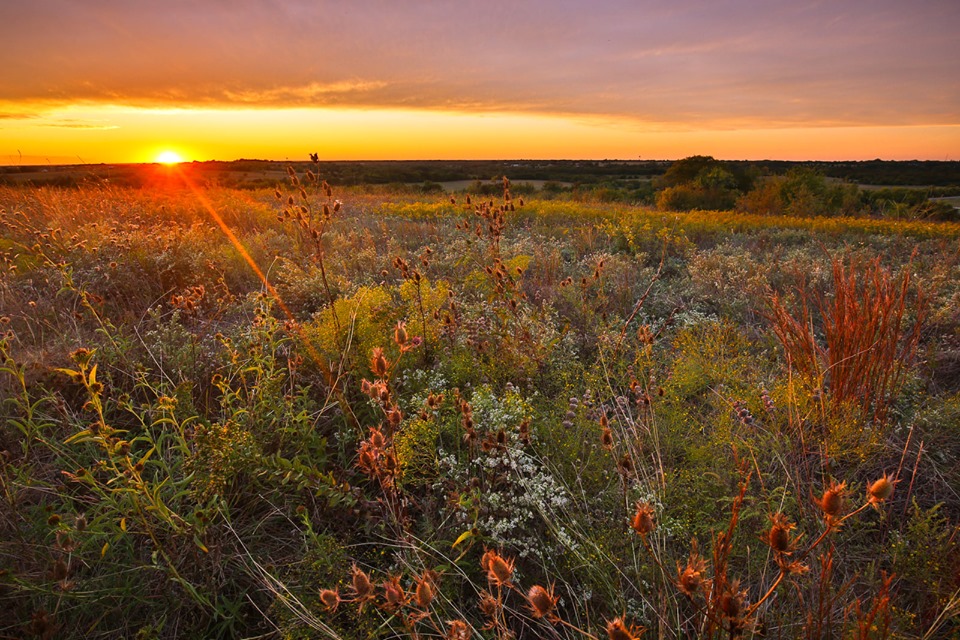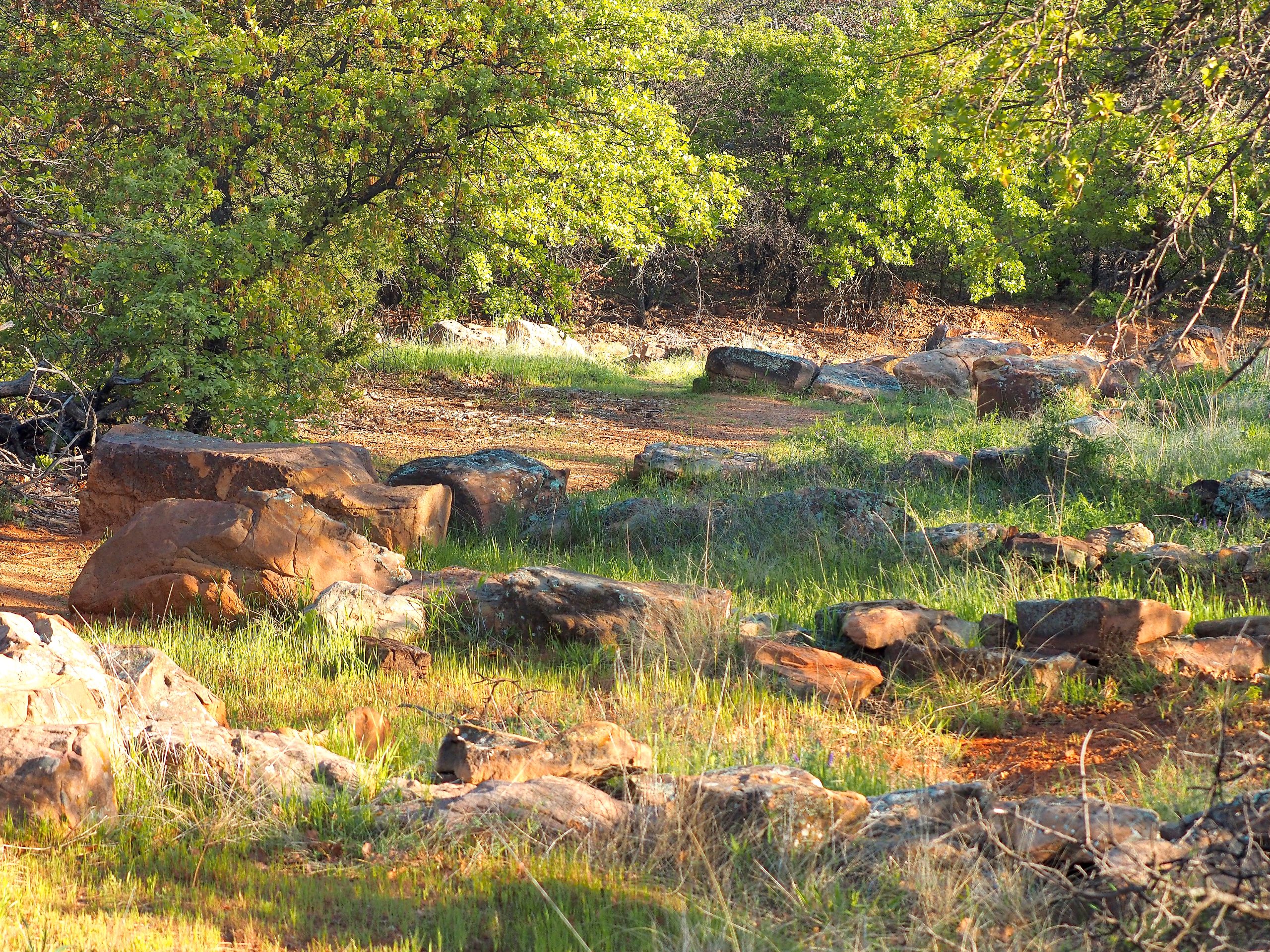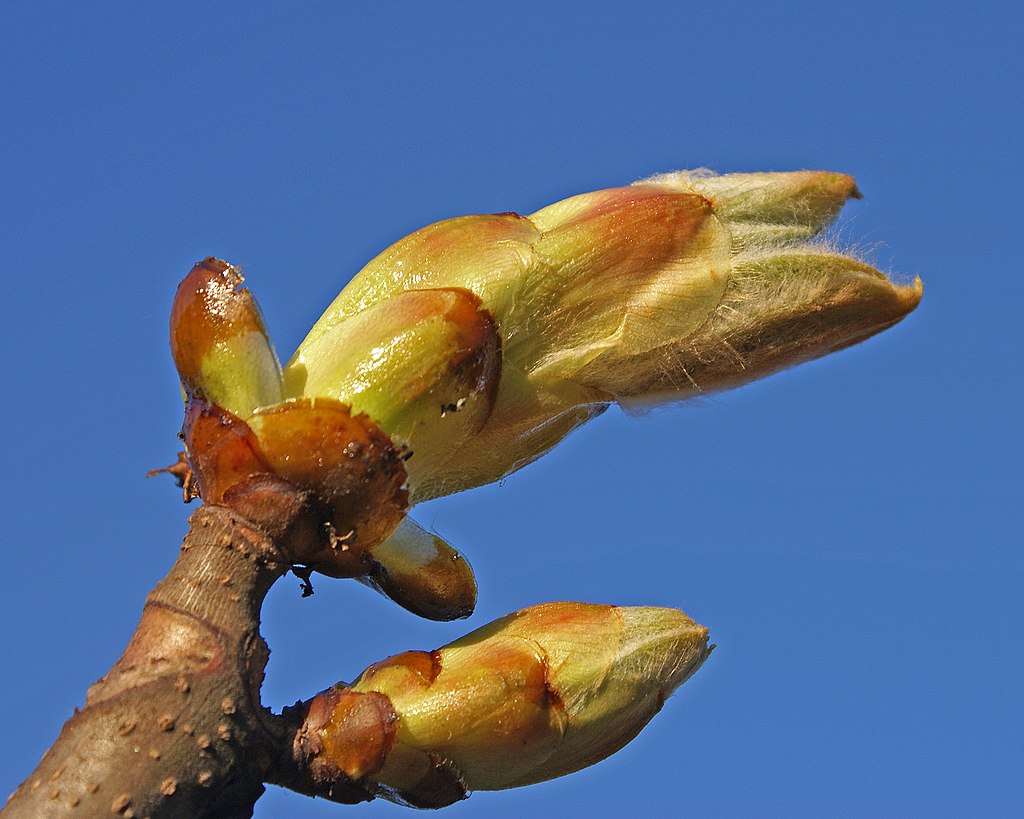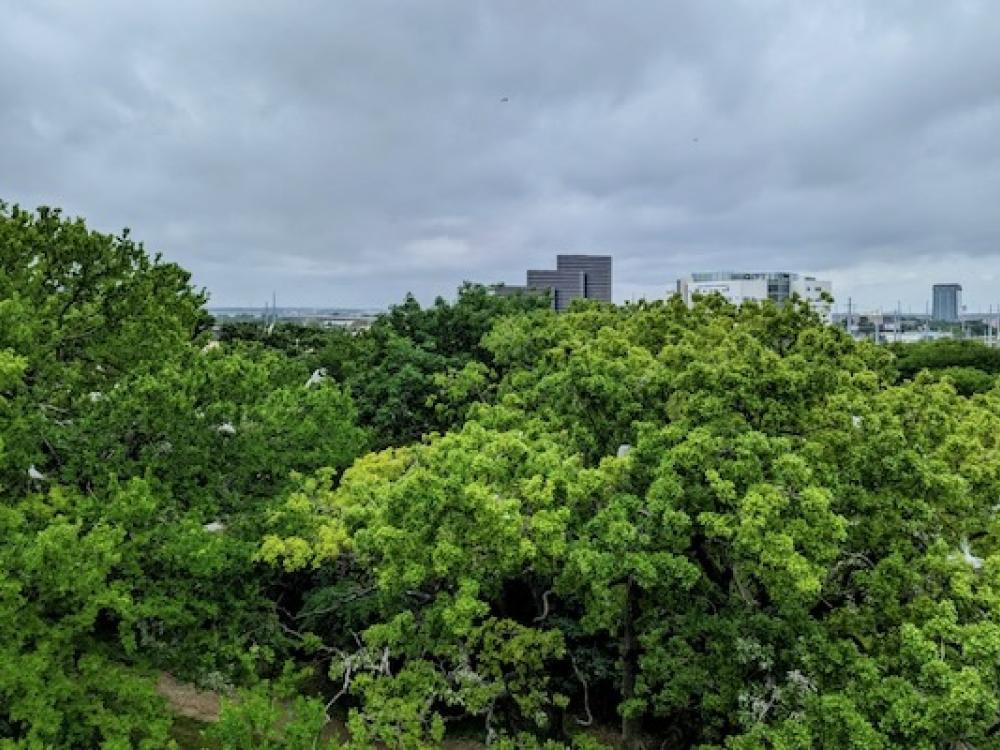Local author’s poison ivy book offers relief for the itchy
Green Source DFW columnist Amy Martin recently published a book on poison ivy called “Itchy Business.” In this interview, Martin talks about the plant that inspired her to write the book and what she learned over the years from coping with it. Photos courtesy of Scooter Smith.
May 3, 2016
J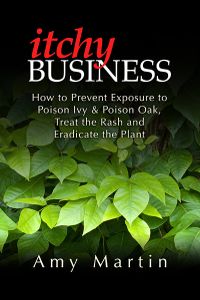 T: WHY DID YOU WRITE THIS BOOK?
T: WHY DID YOU WRITE THIS BOOK?
AM: To reduce suffering, mine and others. The stuff I bought from the drugstore just didn’t work. I was desperate, so I started experimenting. After a while patterns emerged of what worked and what didn’t. I saw that there was sort of a science, or at least a logic, behind what worked. The key was to treat the inflammation of what is essentially a hellishly hot allergy rash. And by practicing safe scratch, that’s very important.
But most people go for counter-irritants. Stuff like kerosene or shoe polish or lye. It overrides the itch. Destroying your skin will do that. Quite distracting to the nervous system, so it focuses on that and not the itch. It breaks my heart that people hurt themselves so. It’s such overkill, like using a blowtorch to clean your bathtub. And it only deals with the itch and not the rash. The book teaches you counter-irritants that do both.
JT: WHO IS THE BOOK WRITTEN FOR?
AM: The flip answer is that it’s for the 50 million people who get the rash each year. That’s a LOT of suffering! But it’s folks, mostly guys, with outdoor jobs that need this book. Poison oak and ivy is the absolute bane of forestry, landscape and agriculture workers — almost 2 percent of all worker compensation claims in California are poison oak related.
But I’d also like to reach those who are outdoors because they love it there. My brass ring are those who lead groups of people in the outdoors. They often deal with newbies. If people are scared of nature because of bad experiences with poison oak and ivy, they’re less likely to feel positive about the environment and protecting it. Really, that’s the bottom line.
jT: HAVE YOU HAD A LOT OF CASES OF POISON IVY? ARE YOU VERY SENSITIVE TO IT?
AM: I am a pale pink person with thin skin. Poison ivy considers me to be an amusement park. I remember being five, covered all over with the rash AND I had big sunburn blisters. I oozed goo from all body parts. My ear and eyes swelled shut. I was one miserable little girl. And I just kept getting it.
When you’re just hiking around nature, you can usually avoid it. But once I started getting very hands-on with nature, working with some rural land, putting in trails, removing invasive brush, doing erosion control on creeks, poison ivy was literally in my face all the time. And that’s a terrible place to get a rash! Those 12 years I worked in habitat restoration gave me a chance to study poison ivy in depth. Identifying it, managing it, eradicating it, treating the rash.
JT: WHAT CAUSES THE ITCH?
AM: Urushiol. It is the weirdest stuff, kind of a resin. Every part of the plant has it, except flower nectar and pollen. It’s not caustic to the skin. It’s a high-powered allergen. Three out of four people are allergic to it, at least in the right conditions. A quarter of us are virulently allergic and a quarter of us don’t react at all.
Urushiol gets on your skin and binds within 15 minutes to two hours, depending on how sensitive you are and how much oil, dirt and hair is on your skin. Then it does this dramatic descent through the skin to the inner dermis, setting off all kinds of allergy alarms as it does. There it reacts with a protein and transforms. It ceases to be urushiol. This really out freaks the immune system. It goes on full-blown attack: get this alien of here. The cytokines and other biochemicals the body throws at it cause massive cell death and dying is itchy business.
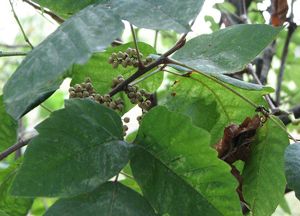 JT: WHY DOES THE PLANT HAVE THIS QUALITY – WHAT PURPOSE DOES IT SERVE? DO ANIMALS GET POISON IVY TOO?
JT: WHY DOES THE PLANT HAVE THIS QUALITY – WHAT PURPOSE DOES IT SERVE? DO ANIMALS GET POISON IVY TOO?
AM: Urushiol serves no purpose except to harass humans. It doesn’t do anything special for the plant. It’s just there in the sap. Animals love poison oak and ivy: eating it, laying in it, consuming the berries. Only people and a few hairless primates react to it. The price humans paid for losing our fur. And the more we develop land, carving clearings into the forest, the more poison oak and ivy grows. It loves the edge of woods. There’s more of it now than ever before. It is so karmic.
JT: I READ THAT POISON IVY’S POTENCY HAS GREATLY INCREASED SINCE THE 1960S DUE TO THE INCREASE IN CARBON DIOXIDE AND IS EXPECTED TO INCREASE AS CARBON LEVELS RISE.
AM: Adding to the karma, eh? It is a highly adaptable plant and loves the heat. When Toxicodendron radicans migrated from China to here eons ago here it sure found its happy place, spinning off three more species, enabling it to exist anywhere except deserts, arctic lands and high altitudes. Long after humans are gone from global warming, poison oak and ivy will continue.
JT: SO POISON IVY REACTIONS ARE ACTUALLY BECOMING MORE ITCHY?
AM: They could. But it’s not confirmed that all poison oak and ivy species in all places react to carbon dioxide the same way. How bad the rash becomes depends on a convergence of factors, especially the state of your immune system at the time of exposure. But also the condition of your skin, if the weather’s particularly hot and humid, how young and tender the plant leaves are, how you react mentally to the rash and how you treat it. If you fight the itch, it’ll fight you back, and you’ll lose every time.
JT: WHAT DOES YOUR BOOK COVER?
AM: I focus on treating the rash, while prior books got quite lost in the plant’s fascinating lore and botany. But the best approach to the rash is not to get it in the first place. That starts with identification. “Leaves of three let them be” isn’t much help. It’s the leaves you don’t see that get you. So I teach people to know poison oak and ivy so well they can anticipate where it will grow, and how to identify it when the leaves aren’t there because all parts of the plant have urushiol.
But prevention’s the key. I show how to keep urushiol from reaching the skin in the first place. It’s all about the right clothes and barrier lotions and being aware of personal habits so you don’t slather that nasty stuff around. The next best thing to prevent the rash is washing off all exposed skin after being near poison oak and ivy. The longer you wait, the harsher cleaner you have to use. And I show how to eradicate the plant, which is a tough, tough, thing to do.
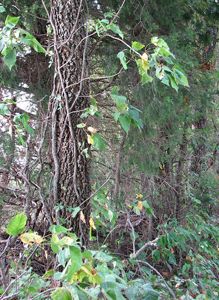 JT: WHAT MAKES THIS BOOK DIFFERENT FROM OTHER BOOKS ON THE SUBJECT?
JT: WHAT MAKES THIS BOOK DIFFERENT FROM OTHER BOOKS ON THE SUBJECT?
AM: Itchy Business is the first book to offer holistic remedies and mind-body techniques for the rash. It’s the first to teach how to detect the rash in its very early stages and nip it in the bud. No other book for the public is so complete on plant identification and preventing urushiol contact. I’m totally OCD, so everything is super organized and systematized. Like cleaning up after contact, I break it down into what to do within 5 minutes, from 5 minutes to 2 hours, from 2 hours to 2 days and once the rash appears.
Prior books just tossed around a few products and home remedies. But I break the rash into four stages and show how each stage takes a different treatment. That’s the big mistake people make, trying to make one product do all. I list lots and lots of products, dividing them into calming, cooling and constricting and which stage they effect. Other books listed home remedies without discretion, but I organize and rank them, explaining why they work or don’t, and often offer better options.
JT: DID YOU TALK TO OTHERS ABOUT THEIR POISON IVY EXPERIENCES? DO YOU HAVE A FAVORITE POISON IVY STORY?
AM: Oh my, the things I’ve heard. It took a few years to write this book, and everyone I talked with had a story to share. There are websites with nothing but rash stories. What fascinates me are the weird ways people expose themselves to urushiol, such as hunters who gut an animal like deer or turkey that feed on poison ivy or its berries and get a rash from the innards. The worst story was a music festival held in a field. No one realized that poison ivy was all through the grass. So they mowed it nice and trim, spewing urushiol everywhere, and filled the field with thousands of people in shorts.
JT: WHAT ARE THE MISCONCEPTIONS ABOUT POISON IVY?
AM: I think the biggest are claims that products or plants can “remove the toxin.” When urushiol binds with a protein in the dermis, it ceases to be urushiol. You cannot get it out. It’s gone. This misconception causes people to try terrible things like kerosene and drawing salves. The rash is an allergic reaction to be managed, not a poison that needs removal.
However, a light touch of poison ivy takes longer to manifest in a rash than a firm one. So if you have a spot of rash, chances are there’s more to come. In that case, solvents like Outdoor Skin Cleanser by Tecnu or scrubs like Zanfel might be able to reach the unattached urushiol and reduce the potential rash.
That delay in rash manifestation between a firm touch and a soft one is why people think the rash spreads. The number one cause of rash spread is that your dog or cat has it on their fur and repeatedly shares it with you. The fluid in the blisters is from your lymph system, and it can’t spread the rash either.
And the stupid idea that eating poison ivy grants you immunity; that old tale will not die. Oh, and jewelweed. Sorry folks, it’s only slightly effective at calming the rash and useless at cleaning urushiol. Many herbs like grindelia and calendula are far better. I have a whole chapter on myth busting.
JT: WHERE CAN PEOPLE BUY YOUR BOOK?
AM: Amazon, Amazon, Amazon. If a book sells well on Amazon in the first three months it gets a ranking that keeps it on the shelves, so to speak. There’s an inexpensive B&W print version and a more expensive color one available soon. The Kindle version should be out the week of April 18 and EPUB for other formats releases in July. Links are at the book website: http://itchy.biz. Invite me to talk at your group or nature center and buy it direct. The talks are quite funny, and the Q&A afterward is often hilarious because of the stories people share.
Itchy Business
What: A 358-page guide to “How to Treat the Poison Ivy and Poison Oak Rash, Prevent Exposure and Eradicate the Plant” by Green Source DFW columnist Amy Martin.
Where: Amazon
Cost: $11.95 for paperback, $7.95 for Kindle
Sign up for the weekly Green Source DFW Newsletter to stay up to date on everything green in North Texas, the latest news and events. Follow us on Facebook, Twitter and Pinterest.
Original post: http://www.greensourcedfw.org/articles/local-authors-poison-ivy-book-offers-relief-itchy

